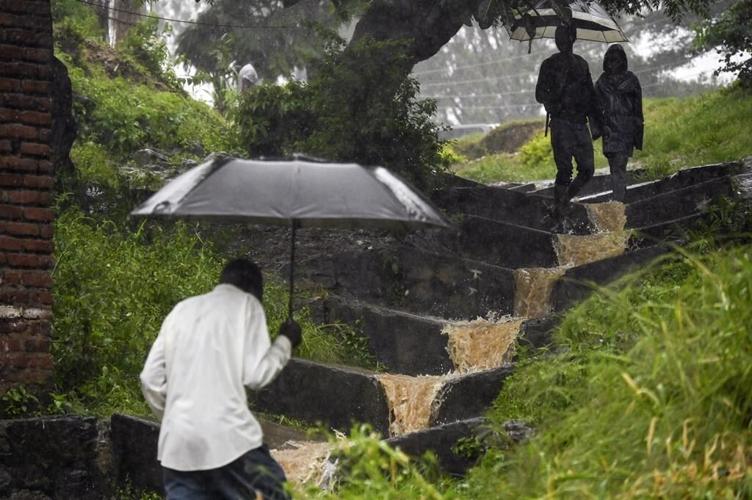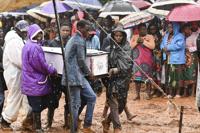BLANTYRE, Malawi (AP) — After four days of destructive wind and rain, local communities and relief workers are now confronting the aftermath of Cyclone Freddy which has killed more than 250 people and displaced tens of thousands of others across Malawi and Mozambique and may still cause further damage.
Cyclone Freddy , but weather monitoring centers warned that countries are still vulnerable to flooding and landslides.
At least 225 people have been killed in southern Malawi, including within the financial capital of Blantyre, officials said. Around 88,000 people are still displaced and parts of the region remain inaccessible. Malawi's president, Lazarus Chakwera, has declared a 14-day national mourning period. In Mozambique, authorities said at least 53 were killed since late Saturday, with 50,000 more still displaced.
“Roads and bridges have been swept away cutting off communities from much-needed support. Houses and homes have been destroyed leaving families stranded and out in the cold,” said Mathew Pickard, the regional director for southern Africa at the aid organization CARE International. “As rescue efforts continue, the death toll is anticipated to rise.”
Hundreds of people have been moved to camps but food and clean water is still scarce, said Andrew Mavala, executive director of the Malawi Network for Older Persons, with dozens of older people who don’t know how they’ll recover.
In Malawi and Mozambique, where cholera outbreaks were already ongoing when Cyclone Freddy ripped through, deaths from the disease and other water-borne illnesses are also expected to rise.
Cyclone Freddy is “very massive in terms of health disruption,” said Ahmed Ogwell, the acting director of the Africa's Centre for Disease and Control Prevention. He warned there’s “every likelihood we may see cross-border spread” of cholera, which already has outbreaks in Mozambique and Malawi. Both countries recorded more than 3,000 new cholera cases in the past week.
Scientists say human-caused climate change has worsened cyclone activity.
Friederike Otto, a climate scientist at the Grantham Institute who leads the World Weather Attribution group, drew parallels between Cyclone Freddy and last year's Tropical Cyclone Batsirai and others,
“If we did a study on Cyclone Freddy the findings would be very similar, given the processes leading to the heavy rain in Freddy are very similar to those in Batsirai,” Otto said.
Cyclone Freddy has caused , when it pummeled Mozambique as well as the and Réunion. It then looped back to the mainland.
“Ocean temperatures between Mozambique and Madagascar during the second loop that Freddy took between them were quite warm to keep the cyclone alive and provide a lot of moisture,” said Roxy Mathew Koll, a climate scientist at the Indian Institute of Tropical Meteorology. "These persistently warm ocean waters and excess supply of moisture is a clear signal of climate change.”
Freddy first developed near Australia in early February and traveled across the entire southern Indian Ocean before it bounced around the Mozambique Channel. The U.N. weather agency said what made Freddy remarkable is that it never completely dissipated while over land, even after two landfalls.
The World Meteorological Organization has convened an expert panel to determine whether it has broken the record for the longest-ever cyclone in recorded history, which was set by 31-day Hurricane John in 1994. The assessment will take at least two months.
___
Alexandre Nhampossa and Tom Gould contributed to this report from Maputo, Mozambique. Kabukuru reported from Mombasa, Kenya.
___
Associated Press climate and environmental coverage receives support from several private foundations. See more about AP’s climate initiative . The AP is solely responsible for all content.














































